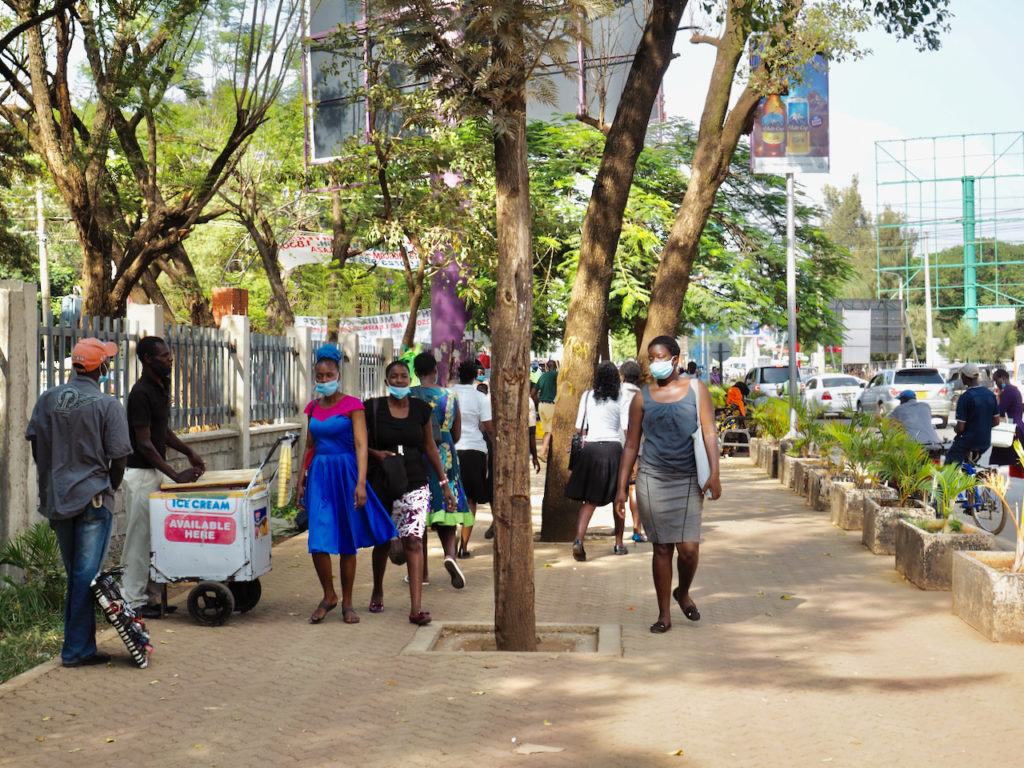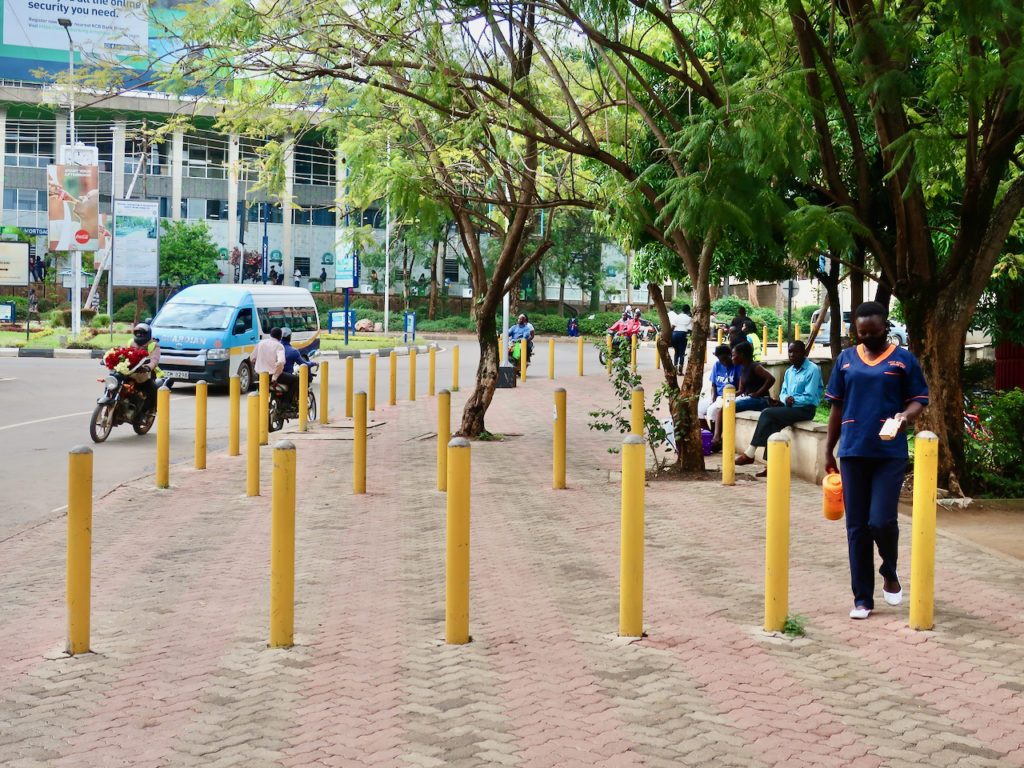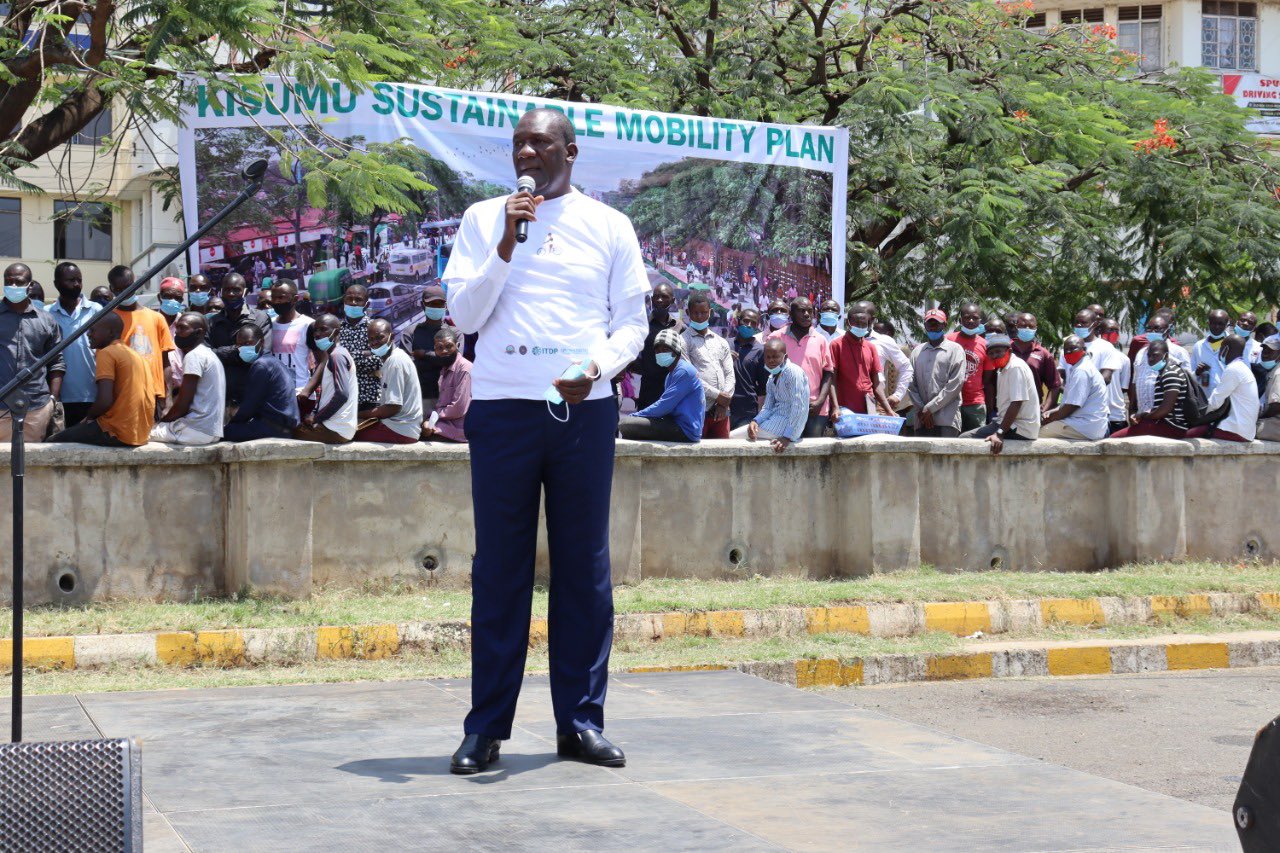 A rendering of a BRT in Kisumu. A BRT system would largely improve the quality of public transport in the city.
A rendering of a BRT in Kisumu. A BRT system would largely improve the quality of public transport in the city.
March 12, 2021
Kisumu Puts Pedestrians First
Kisumu, a port city situated on the shores of Lake Victoria, and Kenya’s third largest urban settlement, is growing in its strategic importance in facilitating goods and trade between Kenya and its neighbours, Tanzania, Uganda, and Rwanda. The city, being the commercial, administrative, and educational hub in Kenya’s western region also, hosts several centers of higher learning, banks, industries, and other businesses. As a result, the city has witnessed a surge in large infrastructure projects by the national government, leading to an urgent need to re-calibrate these investments so that they can benefit all road users.
To ensure equitable mobility, the city of Kisumu recently launched the ambitious Kisumu Sustainable Mobility Plan with technical support from ITDP and UN-Habitat. In Kisumu, 53 percent of daily trips are by foot, 4 percent by bicycle, 13 percent by matatu, 3 percent by tuk tuk, 13 percent by boda boda, 6 percent by motorcycle, and 6 percent by car. However, despite the high reliance on non-motorised transport, infrastructure designs of most streets focus more on motorised transport. The 10-year roadmap acknowledges the gaps in current and upcoming infrastructure projects and offers safe, accessible, sustainable and equitable alternatives.
The City of Kisumu already has begun implementing best practice designs that improve safety for pedestrians and cyclists in line with the Kisumu Sustainable Mobility Plan. Under the World Bank-financed Kenya Urban Support Program, the city launched the KES 241 million Kisumu Triangle, involving the reconstruction of 1.5 km of walkways along Oginga Odinga Street, Ang’awa Avenue, and Jomo Kenyatta Highway. The project included storm water drainage improvements, installation of utility ducts, installation of solar street lights, and construction of public toilets. Tabletop pedestrian crossings were constructed to provide safe, universally accessible crossing points for pedestrians. Construction of the 8 km, KES 659 million second phase of the project is currently underway along Nyerere Road, Ondiek Highway, Gumbi Road, Mosque Road, Achieng’ Oneko Rd, Awuor Otieno Road, Omolo Ogar Road, Ang’awa Avenue, and the Oginga Odinga Street.
Speaking during the launch of the Kisumu Sustainable Mobility Plan and the inaugural Kisumu Car-Free Day, the Kisumu Governor, Professor Anyang’ Nyong’o, reiterated that his administration is keen on ensuring equitable allocation of street space. “Considering that the majority of residents visiting the CBD are pedestrians and cyclists, we want them to experience improved accessibility and convenience as they go about their business,” he explained.
Kisumu City Manager Abala Wanga also explained that the city will sensitise its residents on the benefits of non-motorised transport by hosting additional car-free days and implementing additional NMT initiatives. He noted that the city is working on revamping parking regulations in a bid to transform the central business district into a walking and shopping friendly space. The Mobility Plan recommends time-based charges for on-street parking, a reduction of government-subsidies for parking, and maximum parking standards in new private developments to control the supply of parking, especially in areas with good access to public transport, thereby encouraging a shift toward the use of public transport, walking, and cycling.
ITDP board member Eng. Meshack Kidenda also noted that the Kisumu Sustainable Mobility Plan incorporates the development of a bus rapid transit system, which is critical for a city experiencing rapid growth. Currently, the public transport system consists of matatus and shared tuk-tuks, carrying volumes as high as 4,500 passengers per hour per direction on the busiest corridor, Kenyatta Highway. While these modes provide basic access for medium and long-distance trips, the public transport services experience several challenges including overcrowding and unsafe driving, both of which stem from the current business model where operator income is directly tied to the number of passengers carried. Additionally, most public transport stages lack bus shelters, and terminal and depot facilities are lacking. To address these issues, the Kisumu Sustainable Mobility plan envisions a high-quality, cost-effective, and user-friendly public transport system, integrated with accessible pedestrian and cycling networks to enhance mobility and access for all residents.













